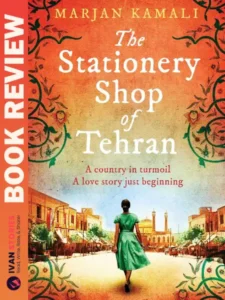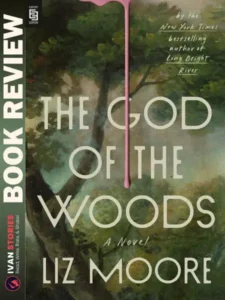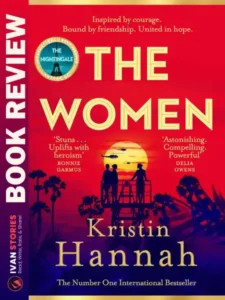Book Highlights
| Author Name | Pushpa Kurup |
| Country | India |
| Book Type | Non-Fiction |
| Page Count | 242 |
| Genre | Historical Non-Fiction, Feminist Literature |
| Story Setting | Ancient Indian Mythology |
| What to Expect | Empowering Women, Mythological Narratives, Cultural Insights, Feminist Analysis |
| Readability | Engaging, Moderately Paced |
Book Review
A Deep Dive into the Women of Indian Mythology
Pushpa Kurup’s Power Women is an ambitious collection of stories that retells and reinterprets the lives of the powerful women from Indian epics. The book draws from mythological giants like the Mahabharata and Ramayana as well as folk traditions, bringing to light both the well-known and the obscure female characters who have shaped Indian culture. Through this work, Kurup not only retells these stories but also examines them from a feminist perspective, dissecting how these women’s narratives have been twisted, suppressed, or overshadowed by the dominant male perspectives of the time.
The book starts by highlighting women like Draupadi and Sita—names familiar to anyone who has even a passing knowledge of Indian mythology. While these stories may seem well-trodden, Kurup peels back the layers of interpretation, revealing the underlying strength and complexity of these characters. Draupadi, for instance, is not merely a pawn in a game of dice; she is a symbol of fiery resilience, enduring the injustices of a deeply patriarchal society while holding on to her dignity. Similarly, Sita’s refusal to return to Rama after her abduction by Ravana becomes a symbol of her agency, turning her narrative from one of victimhood into one of personal conviction and integrity.
Yet, the brilliance of Power Women lies in its inclusion of lesser-known figures like Unniyarcha and Kannagi, whose stories may not be familiar to everyone. Unniyarcha, the warrior from Kerala, stands tall as an independent woman who refuses to bow to societal pressure. Kannagi, on the other hand, channels her fury into righteous destruction, laying waste to the prosperous Pandya kingdom of Madurai after her husband’s unjust execution. These stories, while rooted in specific regional traditions, resonate universally, speaking to the deep well of strength that women have always drawn from in the face of oppression.
Character Insights and Thematic Depth
Kurup’s portrayal of these women is deeply nuanced. Each character is given the space to be complex, multifaceted, and human—far removed from the one-dimensional portrayals that mythology often imposes. Satyabhama, for example, is not merely Krishna’s wife; she is a warrior in her own right, fighting alongside him to slay the demon Narakasura. Meanwhile, Satyavati, often dismissed as the manipulative mother of Vyasa, is reimagined as a woman who wielded tremendous influence in a male-dominated world, setting the stage for the great Kurukshetra War.
The overarching theme of Power Women is the balance of power between genders in Hindu mythology, a concept Kurup unpacks thoughtfully. While men often take center stage in these stories, Kurup draws attention to the moments when women step out of the shadows to control their own fates, whether through quiet resilience or bold defiance. The stories reflect a tension between the societal constraints placed on women and the innate power many of these women hold—power that is not always recognized but is undeniably present.
Writing Style and Author’s Voice
Kurup’s writing is both evocative and analytical, blending clear prose with deep cultural insights. Her language is accessible without losing the richness of the epics she draws from, making the book suitable for readers with varied familiarity with Indian mythology. The pacing is steady, allowing each story to unfold at its own rhythm, while Kurup carefully dissects the patriarchal structures that have shaped these narratives.
While Kurup’s tone is generally academic, there’s an undeniable passion behind her words. You can feel her deep admiration for the women she writes about, which transforms what could have been a dry retelling into something vibrant and compelling. At times, though, the book’s focus on historical context can feel a bit overwhelming, especially for readers who may not be familiar with the finer details of Indian epics.
Personal Reflections
Reading Power Women made me reflect on how the stories we are told shape our perceptions of gender roles. I was especially struck by Kurup’s depiction of characters like Ahalya and Sita, whose actions have often been framed within narrow, patriarchal boundaries. These women, traditionally viewed as victims, emerge in Kurup’s retelling as agents of their own destinies. The book made me question how many other stories from history and mythology have been similarly skewed—and how much richer our understanding of the past could be if we looked at these tales through a more balanced lens.
Final Thoughts
Power Women is an enlightening and thought-provoking read that will appeal to anyone interested in mythology, gender studies, or cultural history. Kurup has done an excellent job of giving voice to women whose stories have been neglected or misrepresented for centuries. The book’s strength lies in its feminist perspective and its ability to bring these women to life, not as secondary figures, but as powerful, complex individuals.
That said, the book could benefit from a bit more focus on some of the lesser-known characters, as the more famous stories sometimes overshadow them. Nevertheless, it’s a must-read for anyone curious about the hidden narratives of powerful women in Indian mythology.






